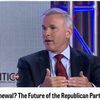"It's sort of the worst of times and the worst of times."
This quote from Irv Katz, president of the National Human Services Assembly, a coalition of nonprofit organizations, sums up the state of nonprofit organizations' funding cuts in the public policy arena. Nonprofit organizations that survived the budget cuts in 2011 are now developing a new campaign to combat far deeper reductions in 2012.
Even if these entities are successful in staving off the worst, it is clear that the familiar ways of doing business with the government are over. To continue aiding their constituencies, nonprofit organizations must reconsider the "old-style advocacy" type of government funding requests and take a more creative, long-term approach. This "new normal" in economic matters requires a new perspective.
In Nudge: Improving Decisions About Health, Wealth, and Happiness, Cass Sunstein and Richard H. Thaler discuss the power of choice architects, who shape incentives to advance the public good.
The government is the largest choice architect in citizens' lives; it incentivizes and nudges people in thousands of different ways toward what it considers to be the public good. Should a person buy or rent a home? This decision is often based on government tax incentives for home ownership. Should one purchase a hybrid or conventional car? Tax write-offs and privileges such as using fast lanes on highway can make the hybrid a better choice.
I put more money in my retirement account because I get a tax break for doing the responsible thing, although this action resulted from prodding by the government. When the government taxes cigarettes, smoking decreases and tax revenues increase, which is another example of government nudging.
Government incentives can allow greater freedom of choice and, unlike government grants, do not require an annual public request for funds.
Home mortgage deductions total about $100 billion each year and silently drive our housing market. But, imagine if individual homeowners were required to lobby the government every year to grant them a mortgage refund. Their chances of success would likely be zero.
Because it's a nudge through our tax system, we hardly notice this $100 billion annual payout. Nonprofit organizations seeking to improve the lives of the voiceless should pay attention to this psychology.
The truth for nonprofit organizations is that neither philanthropic nor government grants can provide the sustainable funding solutions required to meet the needs of those they seek to serve.
Their cause might be popular this year, but popularity among funders and government can vanish when the newest, hottest social entrepreneur comes onto the scene. To be successful in the new normal, nonprofit organizations need to become policy choice architects, for those they serve, by answering this question:
"What government policy, if changed, would incentivize those we seek to serve to come to us?"
Let's look at a real-world case study of Shifting Gears, a career transition public-private program in Michigan, to see how this approach might play out. As Diana Wong, the program's creator, summed up, "This new fiscal environment has made us re-think our advocacy strategy."
This public-private program has been getting grants from donors and the government. It offers a focused career-coaching program, placing white-collar workers in second stage growth companies that need new talent after working through entrepreneurial start up stage. They have an amazing success rate, with over 75% of all participants landing a well-paying job. However, they spend a huge amount of their time chasing government and foundation funding. Following this, they spend more time recruiting unemployed workers into the program. They are thinking of a new advocacy strategy by asking this powerful question:
"What government policy could we change that would incentivize the unemployed to use our successful career transition model?"
They decided the best policy nudge with the greatest impact is the unemployment check sent by the government. They promoted the idea of having state governments extend unemployment benefits to those who enroll in their programs.
Under this scenario, all stakeholders win.
Workers win because more than 75% of those enrolled get new jobs.
Government wins because this transforms the unemployed into taxpayers and prevents the brain drain the state is facing. In addition, given the program's success rate, only a small percentage of those who seek such an extension will likely ever use it.
Nonprofit organizations win as well. Rather than focusing on expensive, time-consuming lobbying campaigns to get government and philanthropic support every year, these organizations' leaders can spend less time on fundraising and marketing these programs and more time implementing them.
Changing incentives makes all stakeholders winners, which is the goal of all successful advocacy efforts. Nonprofit advocates can begin by envisioning themselves as choice architects for lasting world change and asking this simple question:
What public policy could we change in order to nudge the world?
Rich Tafel is President of Public Squared, an organization based in Washington, DC, that is dedicated to training nonprofits for success in the public policy arena. Tafel is also a board member of Michigan Corps. -a local and global network of leaders advancing education and entrepreneurship across Michigan. His email is rich@thepublicsquared.com.
